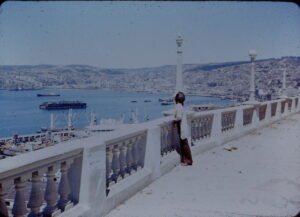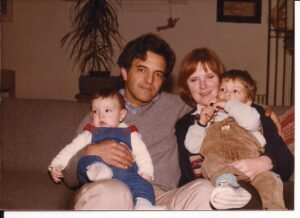Our Immigrants to the Lower Columbia River Region from Europe, Alabama and Chile.
The Early Pacific Northwest.
Around 1741, the Russians started developing the fur trade with native tribes of the Alaskan Coast. When the Russians started moving South along the Pacific Coast, Spain, focused on the Aztec and Inca empires, started exploring the Pacific Coast up North. Starting in 1769, Father Junipero Serra and his Franciscan order, established a series of Missions North of Mexico, all the way up the coast to the San Francisco Bay.
However, the colder, wetter and densely forested Pacific Northwest remained of no interest to any of the world powers. It was inhabited by over a dozen scattered native tribes, each with their own language who lived in simple log homes and subsisted by hunting, fishing and foraging.
The Era of Explorers and Traders.
In 1776, Captain Cook’s vessels landed on the Oregon Coast, seeking a Northwest Passage across North America that might shorten the sailing times between London and Canton (Guanzhou) in China. They explored the North Pacific Coat up to the Arctic and traded trinkets for furs with the coastal native tribes. When Captain Cook ‘s surviving crew ( Captain Cook had been killed in Hawaii while stopping there for resupplies) arrived in China, they found that Canton and Macau paid 100 times the purchase cost of the furs.
In 1804, U.S. President Thomas Jefferson, aware of Cook’s travels for the British and the importance of the fur trade, commissioned Captain Meriwether Lewis to explore the lands west of the Mississippi River that comprised his Louisiana Purchase to France. His goal was to find a waterway across the continent to facilitate trade and establish U.S. rights to the Oregon Territories. The Lewis and Clark expedition sailed up the Missouri River and then down the Snake and Columbia Rivers to the Pacific, returning east in 1806 with mission accomplished.
Between 1810 and 1813, John Jacob Astor, an immigrant to New York from Waldorf, Germany, launched two expeditions, one by land and one by sea, to establish a trading post at the mouth of the Columbia River in today’s Astoria. It started as a hub for collecting furs from the Great Lakes and Canada to be exchanged in Canton with trade goods for London and New York. These trade goods, in turn, would be exchanged for supplies for Astoria, Hawaii and Canton. A good description of this venture can be seen here.
U.S. Settlers go West.
From 1840 to 1860 over 300,000 people made the overland five-month, 2,000 mile long journey along the Oregon Trail in covered wagons pulled by oxen. It went from Missouri, to the fertile lands of the Willamette River, Puget Sound or, further South, to Utah and California.

To expedite the transfer of western federal lands to U.S. citizens during the Civil War, the U.S. Congress passed the Rural Settlement Act in 1862. U.S. citizens or persons who had served in the Union Army (at the time, African Americans were not considered citizens) could purchase up to 160 acres at $1.25 per acre. Land speculators and mining and timber companies took advantage of this law to gain access to forest land that was near accessible waterways. In southwestern Washington State, logged lands presented good investment opportunities for some astute investors and a few local families who could afford them.
Our Czech Ancestor.
Franz Joseph Chadima (1825-1909), a musician, emigrated to North America in 1856-7. On August 10th, 1857 he married Marie Theresa (1829-1919) in Chicago, Illinois at Old St. Mary’s Catholic church on. Their marriage records may have been burned in the great Chicago fire of 1871.
When the Civil War broke out, Franz Chadima and his wife Marie Theresa were living in Saginaw, Michigan where they operated a ballroom on the second floor of their home. Franz enlisted in a Union Army infantry unit as a drummer. In the late 1990’s a complete copy of his Army discharge records due to illness from rheumatism, was retrieved from the U.S. National Archives in Washington DC by his great grandchild, Greg H.
After serving in the Union Army, Franz Chadima and wife Marie Theresa moved from Michigan to Southwest Washington State where Franz purchased his 160 acres of federal land in the Upper Coweeman River area. They moved to Kalama and Franz died in 1911, after a stay at the Steilacoom State Hospital near Tacoma, WA ., affected by dementia.

As “Our Chadima Family” genealogy shows, his second daughter, Blanche Rose Chadima (1877-1964), married three times. The focus of this story is Frances Nesbit Chadima (1910-2006), the third daughter from Blanche´s marriage to Joseph A. Nesbit (1855-1945). The Nesbit family had lived in Indiana and Ohio since at least the 18th century. Our Nesbit ancestors have Scottish and English origins and we would welcome well-documented information.
Our Alabama roots.
During the Great Depression, Andrew G. Hamm (1912-1976), “Grandpa Andy”, was 21 years old and needing a job in Union Springs, a town of about 2,000 people located 40 miles South East of Montgomery, the capital of the state of Alabama, United States.
In 1933, Franklin D. Roosevelt established the Civilian Conservation Corps to help lift the United States out of the Great Depression. The CCC allowed single men between the ages of 18 and 25 to enlist in work programs to improve America’s public lands, forests, and parks. Enlisters would make $30 a month and meals and lodging were provided in military camp fashion.
“Grandpa Andy” ended up working as a cook for a CCC camp located on the intersection of the Coweeman River and Rose Valley Road, very close to a a farm property of the Nesbit family.

In 1942 “Grandpa Andy” married a local girl, Frances A. Nesbit. Their first child came in 1943. She was a toddler who remembers her father coming home on leave while serving in the U.S. Navy during World War II and then returning to the war while she was taking a nap. Three brothers followed, the last born in 1950.
About 1950, Frances and Andy– who both worked at different times in nearby towns– were able to purchase a property on the Upper Coweeman River and build a home well-located close to the public road and above the river.
The property adjoined parcels owned by Frances brother’s and parents. Grandpa Andy cleared the tree stumps and established a pasture. For a while, the family sold cow milk to a local dairy and the children walked to school on an unpaved road. Their grandma Blanche lived on the adjoining family property.

Through inheritances and purchases, the extended family has been able to build home-sites in adjoining parcels forming a mixed landscape which includes second-growth forest, where selective logging is practiced, adjacent to pastureland and orchards.
Our Chilean connection.
In 1971 Vicente was a 25 year old forestry engineer managing pine and eucalyptus plantations and sawmills in Chile. He worked a thirty-minute drive away from the port of Valparaíso and the seaside resort town of Viña del Mar. By all accounts a pluck job, except for the frequent and severe forest fires from the urban frontier encroachment on the forested hills surrounding the bay.

In the evenings he taught part-time Wood Technology for the Faculty of Architecture of the University of Chile at Valparaíso. This experience, together with his work on the Board of the Chilean Foresters Association, showed Vicente that expanding Chile’s production and use of quality timber products in construction and furniture could help Chile develop its budding forestry sector. When his Chilean wife convinced him to apply for scholarship to specialize in the USA, the timing was right.
In August 1972, on his first jet flight, Vicente arrived at San Francisco´s airport to pursue graduate studies in Forest Industries and Operations Research at the Berkeley campus of the University of California. This was made possible by a Fulbright Scholarship from the U.S. Government and a part-time research assistantship offered by the U.C. Forest Products Laboratory at Richmond, California. Luckily, previous Chilean forestry colleagues had left a good impression at that laboratory.
By July 1974, Vicente had finished his master’s degree, was divorced, and Chile was in the bloody aftermath of the military coup of September 11, 1973. When Dr. Fred Dickinson, his revered graduate adviser, suggested that, before returning to Chile, he might try to get him a practical training job at International Paper Company (IPCo.), Vicente agreed. That would take advantage of the 18 months that the exchange student visa allowed.
After several months of production and quality control studies in Weed, California, at the foot of beautiful Mount Shasta, Vicente was invited by IPCo.’s engineering division manager to join his team at the regional headquarters in Longview, Washington State.

By October 1975, Vicente was living in Longview, Washington State and had met a local lady, divorced, with two boys. Besides raising her two boys, Kathy worked full time as executive secretary for another division of IPCo, and, was driving to Portland (two-hour round- trip) three nights each week to get her college degree in business administration.
When his new boss offered to use the company’s lawyers in New York for the complicated changeover to a permanent residency visa, Vicente accepted and had to work from Vancouver BC, Canada for several months.
In December 1976, after obtaining the U.S. permanent resident status, Vicente married Kathy.

Vicente, Kathy and her two sons lived in Washington, Oregon and Brazil.

The Molinos-Hamm family lived in Illinois, Virginia, Central and South America before returning to the Pacific-NorthwestUSA.
.
